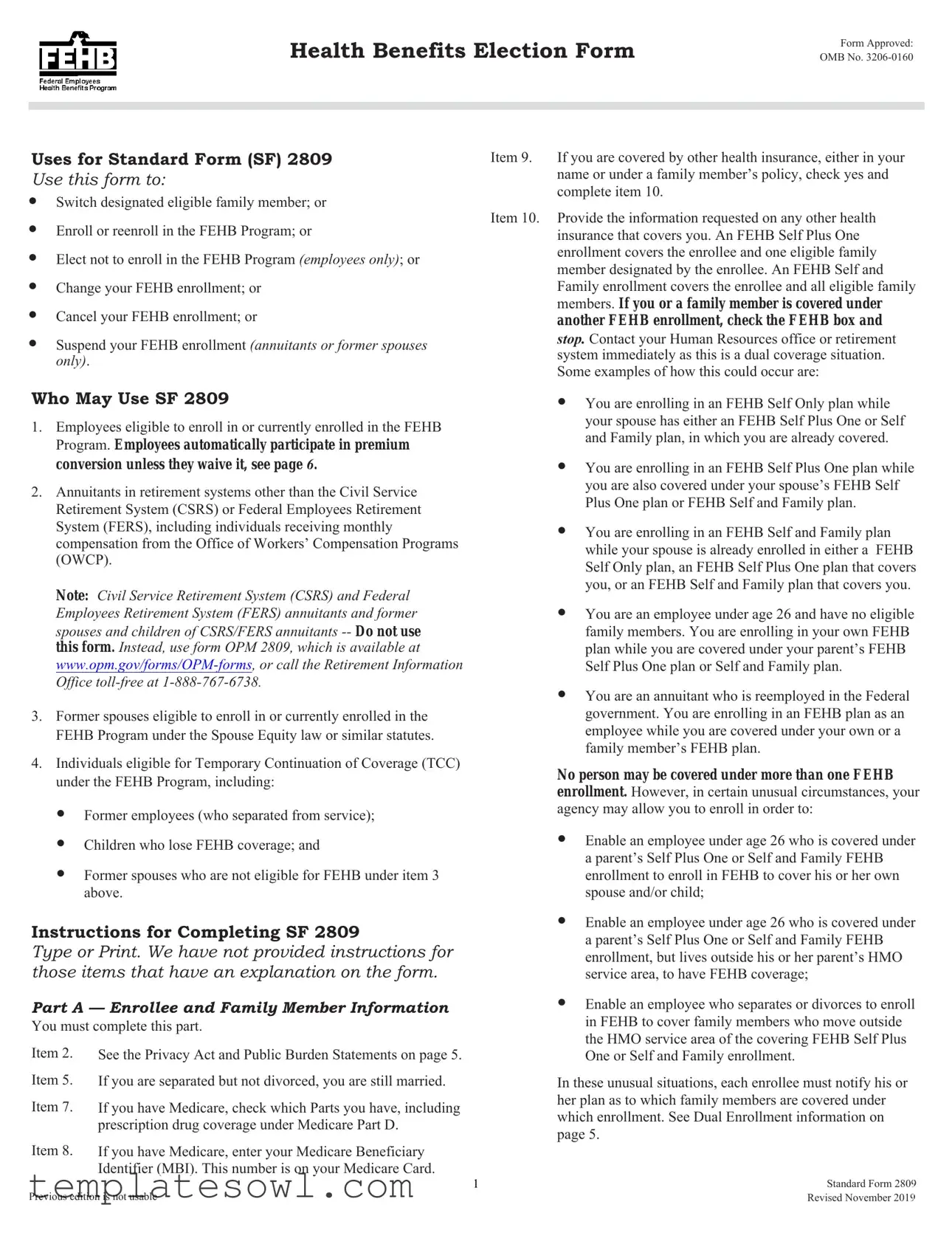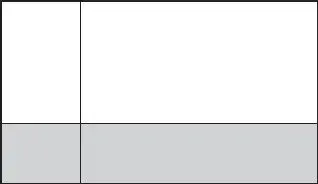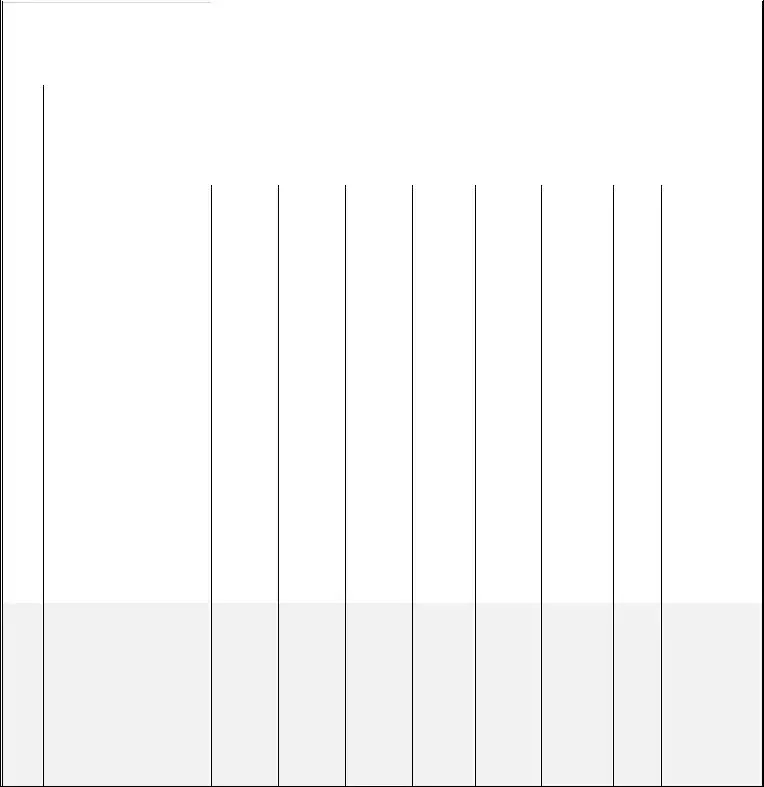Filling out the Standard Form 2809 can be a straightforward task, but there are common mistakes that often occur. One prevalent issue is forgetting to indicate whether you are covered by other health insurance. If you are covered, you must check "yes" and provide the necessary information in Item 10. Failing to include this information can lead to complications later in your enrollment process.
Another mistake involves the completion of family member information. When enrolling in a Self Plus One or Self and Family plan, individuals sometimes neglect to provide the required details about their designated family member. Omitting this crucial information can delay the processing of your application. It is essential to ensure that all family member information is filled out correctly.
People often overlook the importance of including social security numbers for eligible family members in Item 14. If your family member has a social security number, it must be included; if they do not have one, simply leave the section blank. Missing this detail can hinder eligibility verification and affect benefits in the long run.
Additionally, some individuals misinterpret the section regarding relationship codes. Each eligible family member requires designation with the correct code in Item 17. Mislabeling the relationship can lead to denied coverage or enrollment errors, so it's crucial to check and verify these codes carefully.
Failing to check the Medicare status for family members eligible for Medicare is another common mistake. In Item 19, it is essential to indicate if they have Parts A, B, or D of Medicare. Neglecting this step could result in issues with coverage coordination between FEHB and Medicare.
Another frequent error occurs in Part D, where individuals might enter the date of a qualifying life event incorrectly. The date format is critical, as it should consist of month, day, and complete year. Misstating this information could result in an inability to process changes related to enrollment accurately.
People sometimes forget to sign the form in Part H, which is necessary for processing the enrollment request. Without a signature, the agency or retirement system cannot proceed, leading to unnecessary delays.
Some individuals also misunderstand the implications of choosing not to enroll or canceling their enrollment. If you wish to take such actions, it’s important to ensure that these sections are filled out accurately to avoid complications with future benefits.
It is common for people to confuse the limits on dual enrollment in the FEHB Program. If you are covered by another enrollment, it is vital to understand that you cannot be enrolled in more than one FEHB plan. If this situation arises, contacting your Human Resources office is essential.
Lastly, many individuals fail to keep track of required documentation that must accompany the form. Friends and family can be a helpful resource, but it is ultimately your responsibility to ensure that everything is submitted properly. Missing documentation may lead to an incomplete application, further delaying your benefits.




